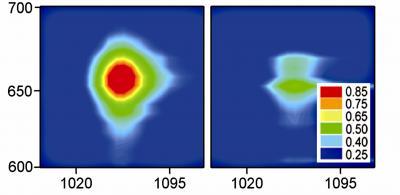An independent study group, convened by AAAS’s Center for Science, Technology and Security Policy, has issued a report on the proposed Reliable Replacement Warhead (RRW) and its role in the future U.S. nuclear weapons program.
The panel concluded that most of the anticipated benefits of the proposed RRW program -- more easily maintained nuclear weapons with enhanced performance margins, improved safety and security properties, and greater ease of manufacture -- would occur in the long term subsequent to modernization of the weapons production complex.
 Biomedical applications could exploit the natural fluorescence of the carbon nanotubes. When light is polarized along a single-walled carbon nanotube (left), this fluorescent emission is strong.
Biomedical applications could exploit the natural fluorescence of the carbon nanotubes. When light is polarized along a single-walled carbon nanotube (left), this fluorescent emission is strong. Darwin will combine light from four or five telescopes and send it down to Earth. Credits: ESA
Darwin will combine light from four or five telescopes and send it down to Earth. Credits: ESA
 This image provides a model of magnetic fields at the Sun's surface using SOHO data, showing irregular magnetic fields (the ‘magnetic carpet’) in the solar corona (top layer of the Sun's atmosphere).
This image provides a model of magnetic fields at the Sun's surface using SOHO data, showing irregular magnetic fields (the ‘magnetic carpet’) in the solar corona (top layer of the Sun's atmosphere).